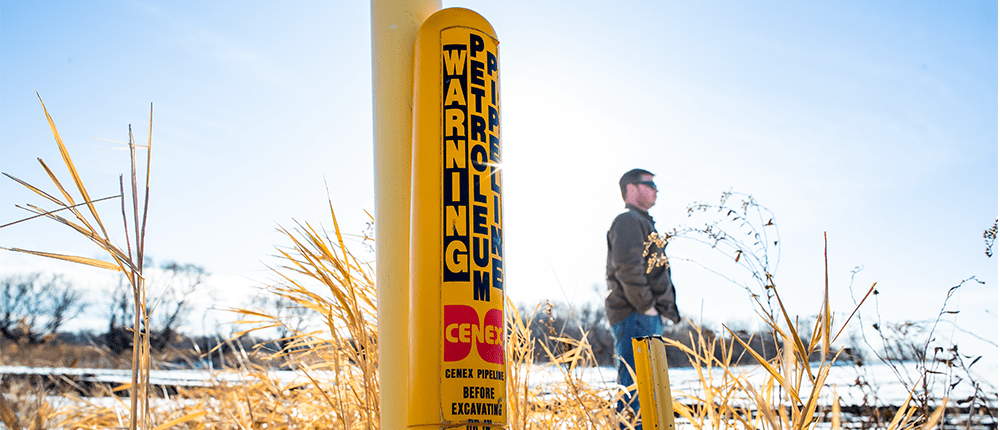A warm fall was finally bringing the right kind of weather for Austin Broden to install drain tile in a few spots on his fields. His tile plow had been sitting dormant for a number of seasons waiting for the right moment. In early December 2020, he had his chance. Broden knew he had to hurry because cold weather was on the way.
Here’s what to do before breaking ground:
- Two to three days before a digging project, call 811 or visit call811.com
- Wait for underground utilities to be marked
- Do not dig within 2 feet of markers
Broden, who grows corn, beans, edible beans, wheat and sugarbeets on land that straddles the Minnesota-North Dakota border north of Fargo, knows the right steps to take before digging: He called 811 on a few fields to have underground utilities marked before he broke ground.
But in one spot, where he would be trenching away from the road and along a river, he assumed utilities weren’t nearby, so he didn’t make the call.
Then, as he broke ground to install the last of four drain tiles within an 80-foot area, his tile plow hit metal. He was scraping the top of the Cenex Pipeline, a refined petroleum pipeline.
“If I had known I was so close to that pipeline, I wouldn’t have attempted it,” he says. “We were almost done with the job and I was already thinking about the work we had to do on the next field down the road. It was a race against time.”
Know What’s Below
Under much of America’s farmland lie buried utilities. From water to natural gas to oil and electricity, these utility lines carry resources to residents. But they also carry dangerous consequences if they’re damaged.
“Hitting an underground utility is a serious safety hazard and can even cost a life,” says Tina Beach, public awareness specialist for CHS. She says the best course of action is to call 811 before breaking ground, no matter the depth. “Never assume you know the location of a buried utility. It’s important to go straight to the source for information on utilities and call or click 811,” she says.
Even a small scratch to a pipeline or other utility line can have serious consequences, Beach says. Pipelines are inspected from the air by plane, checking for indications of excavation.
“All incidents with a pipeline need to be reported immediately,” says Beach. “It’s not just the immediate impact to the utility line that matters. Accidents can lead to corrosion and then safety or performance issues, so every incident must be reported and repaired.”
A producer shares why you should call 811 before breaking ground.
Safety First
“I was lucky,” says Broden, who was digging 52 inches below the surface. “When you’re busy, it can be hard to plan ahead and slow down to make sure every step is taken. I’ve learned firsthand that safety must be first on the list.”
By calling 811 to have utility lines marked before you dig, you can reduce your liability for damages. Even more important, you help ensure that everyone will go home safely at the end of the day.
“It takes a lifetime to build a farm,” says Beach. “It takes just one free call to 811 to keep it safe."

Get to know 811
MYTH: 811 is only for digging.
TRUTH: Calling 811 before any soil-related project is always the safe thing to do. Other projects that might require calling 811 include installing drain tile, subsoiling, building a waterway, digging fence post holes and drilling irrigation wells. If you’re going to break ground, call 811.
MYTH: I don’t need to call 811 because I remember when the utilities were put in and I’ve called 811 before.
TRUTH: The depth of pipelines and utility lines can change over time due to erosion, frost heaves and other activities. Don’t assume you know where utilities are.
MYTH: I’m not digging that deep; I don’t need to call 811.
TRUTH: Many utilities are less than a foot underground. Better to be safe than sorry, even for a small project.
MYTH: Calling 811 will cost me time and money.
TRUTH: Calling 811 is free to you. The cost is paid by utility companies. All work is done by professional locators.
MYTH: If I hit a pipeline and nothing happens, there’s nothing to worry about.
TRUTH: Even if it appears the utility line isn’t damaged, always call and notify the utility company. Even minor damage can cause a major problem in the future.
Check out the full C magazine with this article and more.




